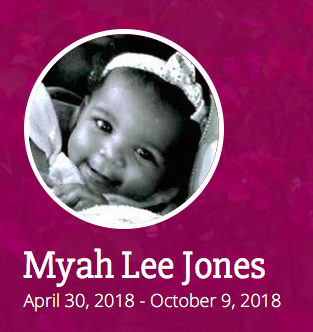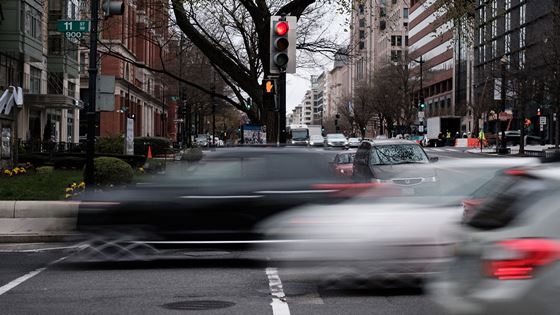Five-month-old Myah Jones died this month in a Cleveland suburb after cops chased her father for shoplifting — making her one of hundreds of people who will be killed in a police pursuit this year.
Myah's father, 31-year-old Robert Jones, had been spotted allegedly stealing meat and seafood from a local grocery store. But this simple shoplifting case escalated. Jones attempted to flee, cops chased him on major and minor roads though the inner-ring suburb of Parma for about two minutes at speeds as high as 60 mph. Jones lost control of the vehicle, slamming it into a garbage truck, where it caught fire.
Police saved Jones's 58-year-old mother, but he and Myah died.

This story is, unfortunately, not atypical of the outcomes of police chases in the United States, which kill an average of 355 people every year, according to the Bureau of Justice Statistics. About a third of those killed are innocent bystanders, like Myah Jones. Chases kill police officers, too — about three a year.
Those numbers mean that police chases kill more people every year than tornadoes, lighting and hurricanes combined, the Washington Post reported in 2015. And chases kill blacks — both as bystanders and as the target of a pursuit — at three times the rate of the overall population, according to a USA Today investigation.
And the chases are almost always excessive. The same Post report revealed that 91 percent of police pursuits like the ones that killed Robert and Myah Jones are in response to non-violent crimes.
Many police chases begin simply because the officer is incensed, said retired police Captain Tom Gleason, of Florida, who sits on the board of Pursuit Safety, a group started by the families of victims of police chases.
Police may witness a driver do something in traffic that makes him angry. When the driver adds to the insult by not stopping, "it becomes personal," added Gleason, who spent 30 years in law enforcement in Florida and Alabama.
"You automatically say, 'How dare him.' You get into the mindset of, 'I’m going to catch them,'" he said.
Many police departments now have policies for police chases — and that's critical, said Gleason. Just over 70 percent of local police departments have adopted policies that restrict where and how police chases occur, according to the Bureau of Justice Statistics. These policies make a big difference in whether police get involved with high-speed chases.
Agencies that leave pursuits up to police discretion have about 17 chases a year per 100 officers. For agencies that "discourage or prohibit" police chases the rate is much lower — 2 in 100, BLS reported.
Such policies are implemented so that the police chase doesn't become more of a threat to the public than the suspect being pursued. For example, guidelines suggest that chases may only be initiated to catch a suspect in a felony cases. And speeding is discouraged on certain roadways.
"You shouldn’t be going 60 mph even with a felon if it is a residential area, because the likelihood of risk to the general public outweighs the necessity of apprehending that criminal at that point time," said Gleason.
Despite these guidelines, the statistics are not improving. In 1990, there were 317 fatalities from police chases, far less than today, USA Today reports.
One problem is many police officers simply ignore the policies. A recent example from Detroit is indicative of the problem. Two police officers were suspended for failing to report a police chase that led to a fatality. Despite being charged criminally for the coverup, they were reinstated after an unpaid suspension and given one-year probation this week.
New York City bans police chases. But according to Jessie Singer at Transportation Alternatives, New York police sometimes don't comply with the rules, leading to the death of several cyclists. In 2012, 28-year-old Eddie Fernandez, who was riding a dirt bike, was killed after a police chase in the Bronx. The family sued and the city in 2018 paid a $1.75 million settlement, according to amNY.
Movies and TV shows play a role in perpetuating the myth that a police chase always has a happy ending. The reality is much darker.
"It is drastically different from TV when you come up on the road and you see someone lying there that was on a bicycle or was trying to cross the road," Gleason said.
Streetsblog asked the Parma Police Department about its policy in general and about the Jones case, but the agency did not respond.






